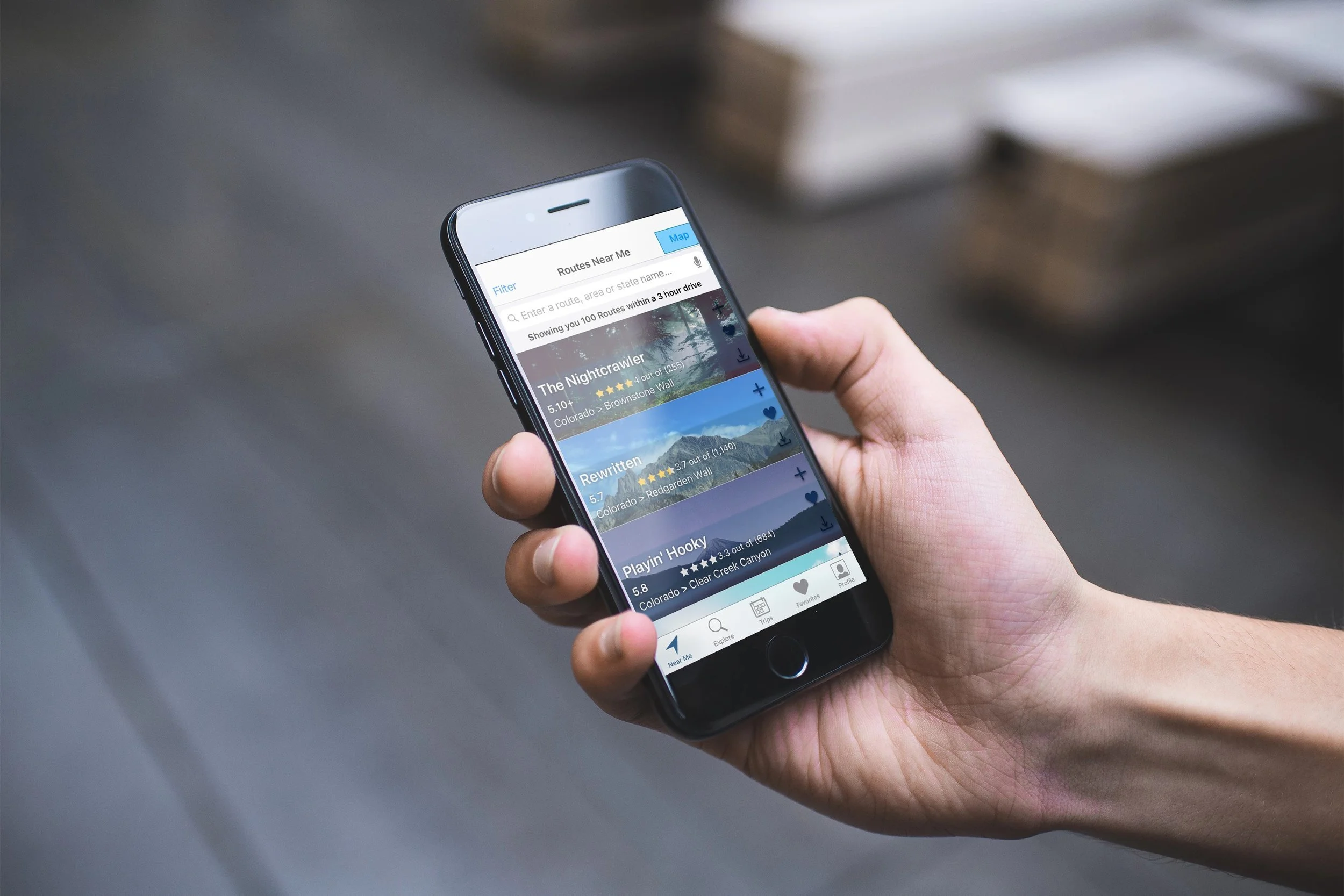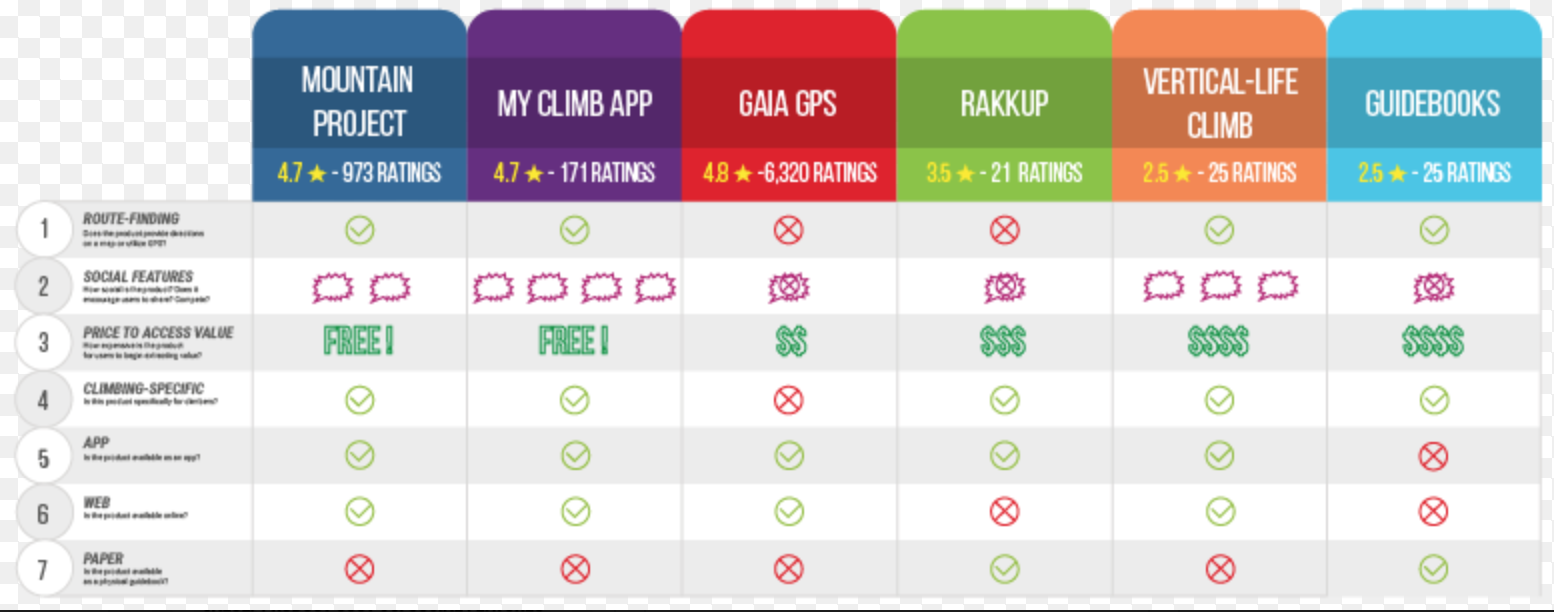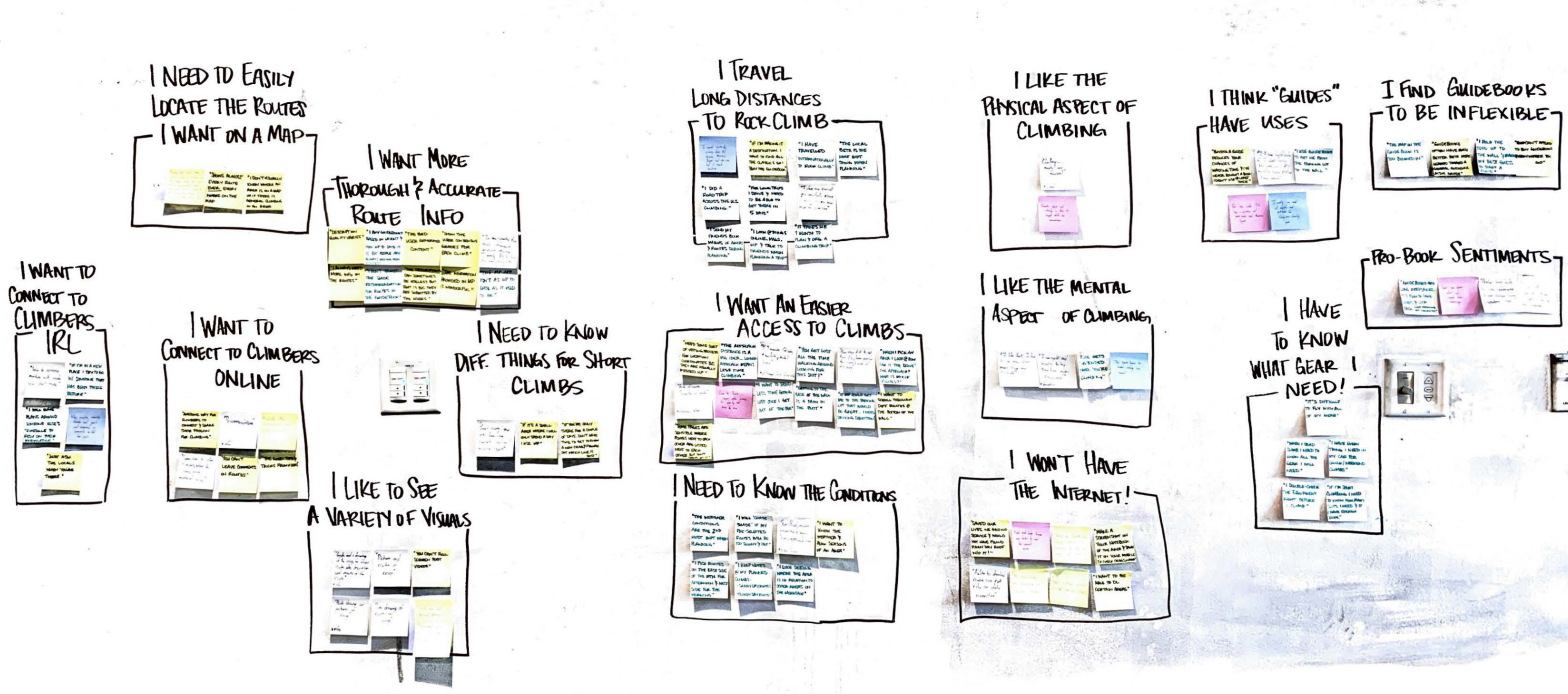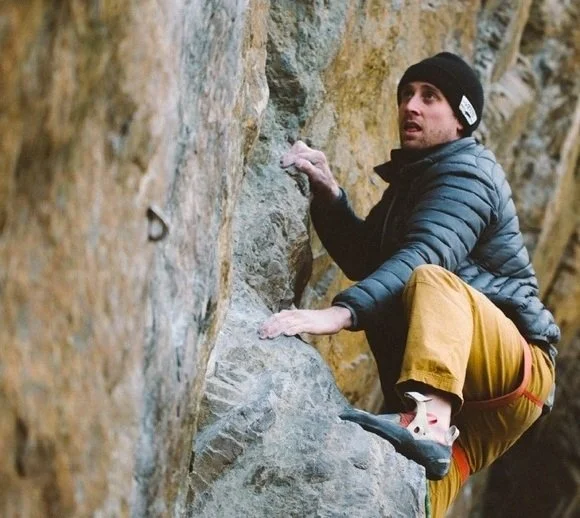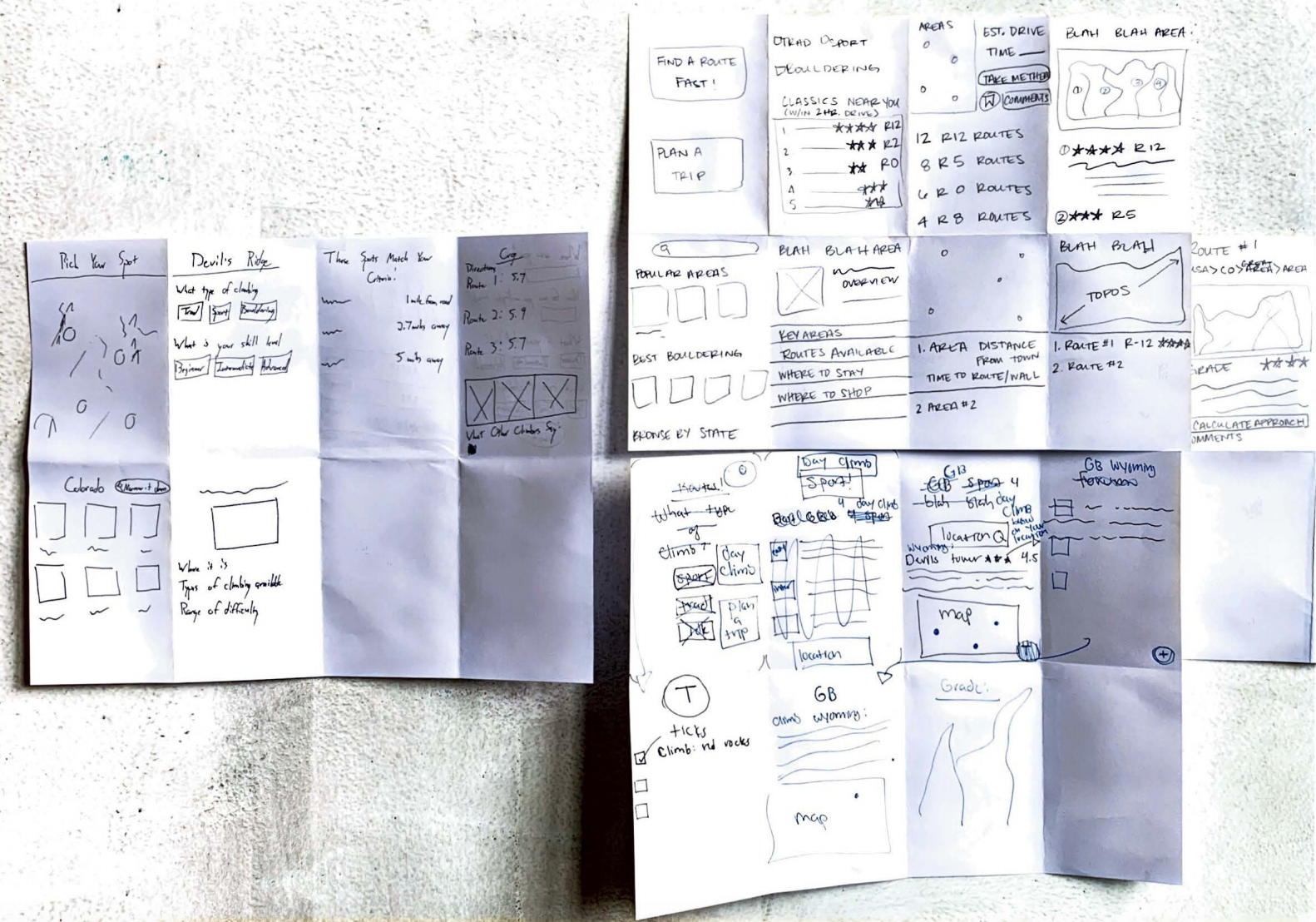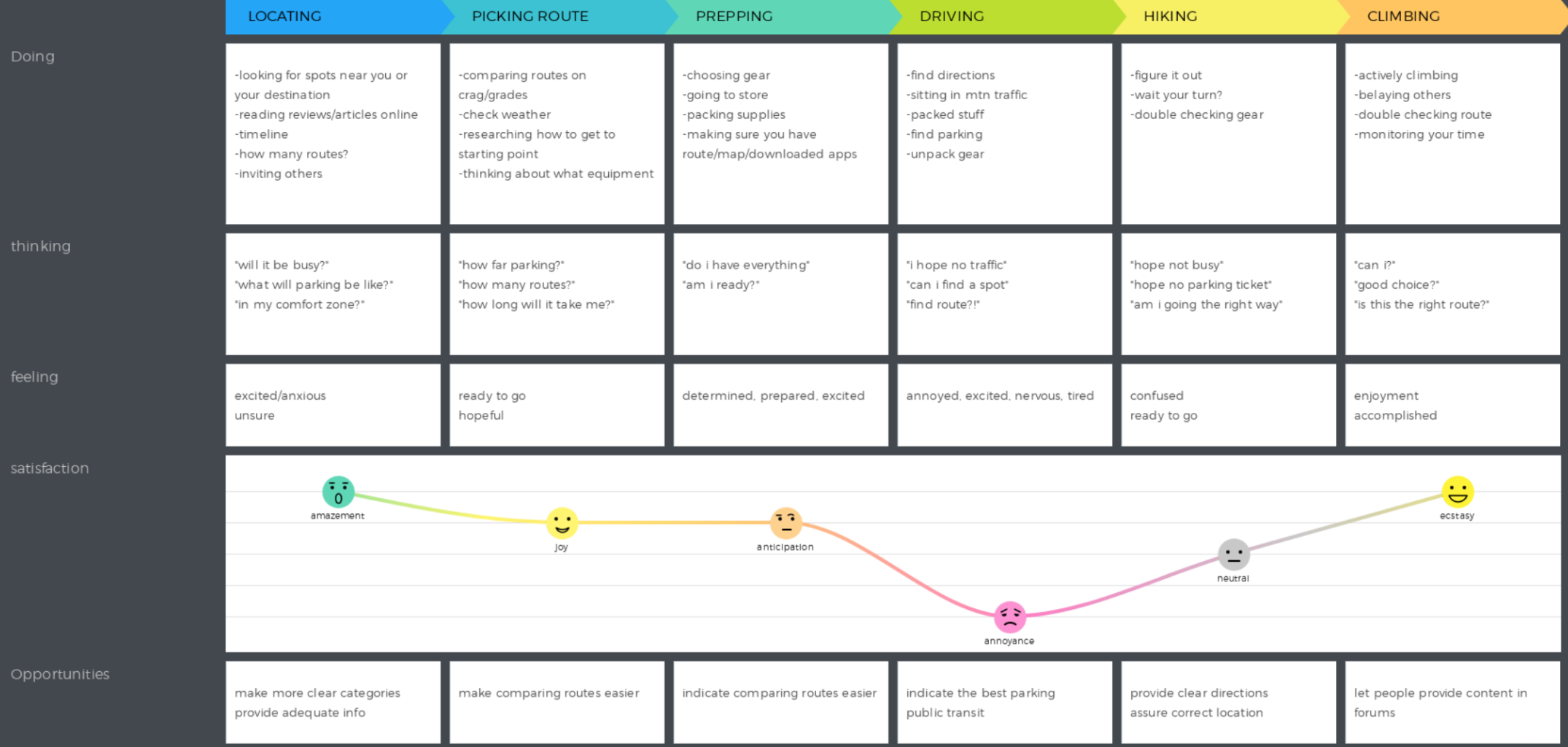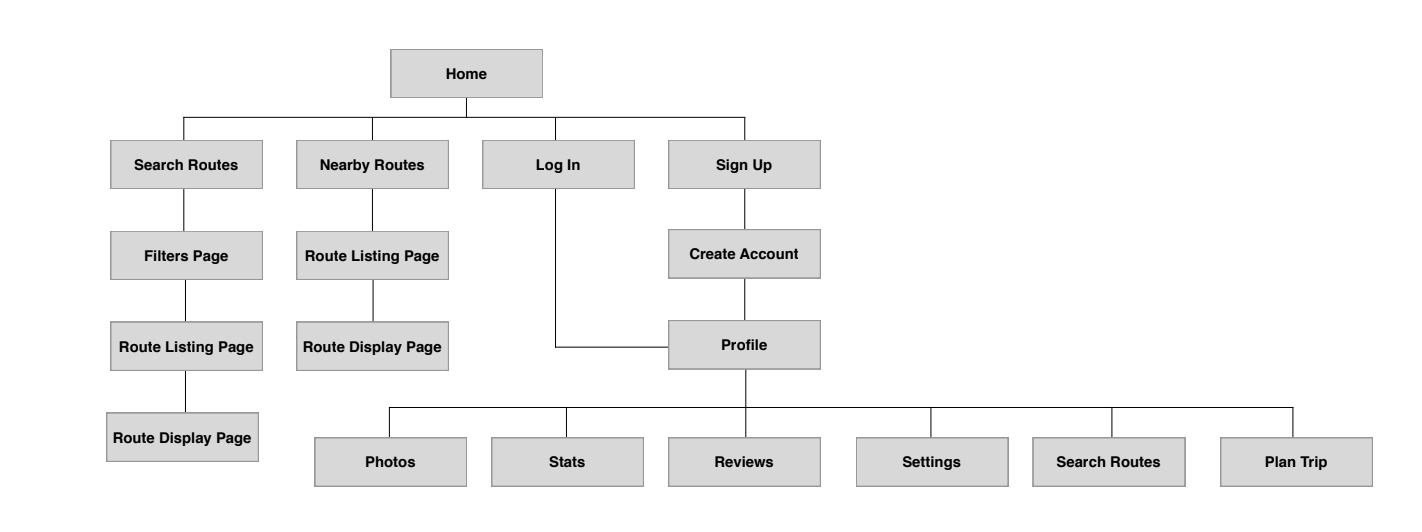MOUNTAIN PROJECT
As the premier app for rock climbers, Mountain Project provides a comprehensive database of climbing options worldwide, from local gyms to remote mountain routes. however its usability is often hindered by a cluttered interface and overwhelming amounts of information. Tasked with improving this experience, my team immersed ourselves in the rock climbing community, seeking to identify the most eessential information for users and streamline the way it is presented.
Overview
Process:
Role assigning and team planning
Competitive analysis
Design research
User research
Surveys
Interviews
Contextual inquiry
Analysis
Affinity Mapping
Sketching
Lo-Fi Prototype
Journey Mapping
Testing
Iteration
Hi-fi prototype
Partners:
Role:
Competitor research
Surveying
Interviewing
Analysis & testing
Wireframing
Tools:
Pen & paper
Dry erase board
Post-it notes
Sketch
InVision
Team Planning & Competitive Analysis
A group of relative novices to the rock climbing world, we first had to learn about the world of climbing, watching every video, reading every article, and talking to every person we could reach in order to best learn the terminology and appeals before embarking on our competitive analysis. Through the competitive analysis, we surprisingly found that books were the biggest competitor of Mountain Project, despite an array of other apps being available, as climbers treated their books like trophies as they became more marked up and dogeared, along with the fact that many climbs took place in limited reception areas, making many apps almost useless after a certain point. As far as apps, while there were several competitors, none was able to offer the range or depth of Mountain Project.
User Research
For our user research, we used a mix of surveys, interviews, contextual inquiry, and reading of reviews, followed by extensive affinity mapping in order to try to find commonalities that we might have previously missed. By posting a Google Docs survey in several rock climbing groups on Facebook, we were able to reach 36 different people, including 32 Facebook survey respondents, of which 6 subsequently gave their emails for more in depth questioning. We also were able to interview 4 people in person. Our respondents emphasized the role of rock climbing as community, the need for quick and nearby climbing information, and the number of sources they often had to consult to plan their climbs.
Personas
The Lifestyle Climber
Name: Chris
Works at an outdoors store
Much of personal identity derived through affiliation with climbing
Climbs in the gym on workdays in order to connect with other climbers and stay fit
Has limited time and wants a way to quickly and efficiently find nearby routes
Has difficulty identifying routes on rock walls
The Destination Climber
Works in app development
Type A personality who uses climbing as a competitive outlet
Plans trips based around tackling new climbing spots
Documents his travels for friends and social media
Struggles with planning, researching, and documenting long trips
Willing to spend whatever it takes to travel and improve
Ideating Solutions
During the ideation phase, we explored multiple approaches to optimizing the route-finding process, integrating both map and list views. additionally, we incorporated account functionalities to enhance trip management, enabling users to efficiently save past and upcoming journeys within the app. We also integrated social features within account settings, facilitating seamless group trip planning and coordination while enabling users to connect with local climbing communities during their travels.
The User Journey
Elevating the Experience
After sketching and ideation, we developed a more precise understanding of the user experience, mapping out potential navigation paths within the app. this included creating a comprehensive journey map that illustrated the full process climbers undergo when preparing for a climb, seamlessly integrating the app into their workflow for a more intuitive and cohesive experience. The journey map also revealed key opportunities for enhancing Mountain Project, such as integrating features to highlight optimal parking locations near climbing routes and identifying accessible public transportation options for improved trip planning.

